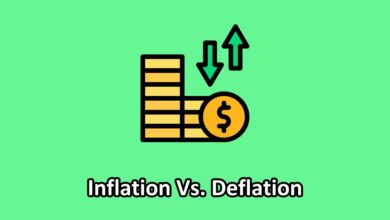When it comes to career advancement within a company, there are two main paths employees can take transfer and promotion. While both options can lead to increased responsibilities and higher pay, they are distinct in their own ways. In this article, we’ll explore the key differences between transfer and promotion so you can better understand which path may be right for you. So let’s dig into the article by first scanning a table that shows transfer and promotion difference.
Transfer and Promotion (Table)
| Transfer | Promotion |
|---|---|
| In business, transfer refers to the shifting of an employee from one place to another. | Promotion in business refers to the shifting of an employee from a lower post or rank to a higher post. |
| The transfer may involve different responsibilities, skills, and work environment | Promotion involves more responsibilities and a higher level of decision-making. |
| It may or may not involve a change in pay or salary. | It often involves an increase in pay and benefits. |
| Transfer often causes the horizontal movement of an employee. | It induced the vertical movement of an employee. |
| The benefit of transfer is that it fills a void or a gap in one department. | It helps improve employees’ motivation and satisfaction. |
| It can provide new opportunities for skill development and advancement. | It is often seen as a step towards higher-level positions and management roles |
| The transfer brings a positive change for employees looking for new challenges and opportunities. | It can be a positive change for employees looking to advance their careers and increase their earning potential. |
You Can Also Read:
- Difference Between Layoff and Retrenchment
- Difference Between Job and Business
- Difference Between Accountability and Responsibility
Definition of Transfer
A transfer is a move within a company from one department or location to a different department or location. This can include switching from one job function to another, moving to a new office location, or even moving to a different country. Transfers are often used to help employees gain new skills and experiences, as well as to fill open positions within the company.
For example, an employee who has been working in customer service for several years may be offered a transfer to the sales department. This would allow the employee to gain new skills and experience in a different aspect of the company’s operations.
Five Purposes of Transfer
- Skill Development: Transfers can provide employees with the opportunity to gain new skills and experiences, which can make them more valuable to the company and increase their chances of future advancement.
- Career Advancement: Transfers can open up new opportunities for growth and advancement within the company, such as moving into a higher-level role or taking on additional responsibilities.
- Filling Open Positions: Transfers can be used to fill open positions within the company, allowing the company to continue operating smoothly.
- Improving Employee Retention: Transfers can be used as a way to retain valuable employees by offering them new opportunities and keeping them engaged in their work.
- Meeting the needs of the company: Transfers can be used to meet the changing needs of the company, such as transferring employees to a new location or department to support the company’s expansion or strategic goals.
Definition of Promotion
A promotion, on the other hand, is the advancement of an employee to a higher-level position within the same department or location. This typically comes with an increase in responsibilities and pay. Promotions are often based on an employee’s performance and potential for future growth within the company.
For example, an employee who has been working as a team leader for several years may be offered a promotion to a management role. This would come with additional responsibilities such as managing a larger team and making strategic decisions for the department.
Four Purposes of Promotion
- Recognition and reward for good performance and contributions to the organization.
- Development and advancement of employees to prepare them for higher-level responsibilities and roles.
- Succession planning to ensure that the organization has a pipeline of capable and qualified individuals to fill leadership and key roles in the future.
- Motivating and retaining top performers by providing them with opportunities for career growth and advancement within the company.
Key Differences Between Transfer and Promotion (With Chart)
While comparing transfer vs promotion, here you can have a look at some of the key differences between transfer and promotion. They are as follows.
- Meaning: A transfer is a move within a company from one department or location to a different department or location. This can include switching from one job function to another, moving to a new office location, or even moving to a different country. On the other hand, promotion is the act of moving an employee to a higher position or rank within the same company.
- Responsibilities: Transfers often involve taking on new responsibilities and learning new skills, while promotions typically involve taking on additional responsibilities in the same role.
- Pay: Transfers often do not come with an increase in pay, while promotions typically include a raise.
- Career Advancement: Transfers can provide employees with new skills and experiences, and can open up new opportunities for growth in different areas of the company. Promotions, on the other hand, typically lead to more senior roles within the same department or location.
- Location: Transfers can involve a move to a new department or location, while promotions are typically within the same department or location.
- Performance-based: Transfers are often used as a way for employees to gain new skills and experiences, while promotions are based on an employee’s performance and potential for future growth.
The following table exactly compares both transfer vs promotion.

You Can Also Read:
Differences With Examples
Here we have some of the differences with brief examples as follows.
Differences in Responsibilities
One of the main differences between transfer and promotion is the change in responsibilities. A transfer often involves taking on new responsibilities and learning new skills, while a promotion typically involves taking on additional responsibilities in the same role.
For example, an employee who is transferred to a new department may need to learn new processes and procedures. On the other hand, an employee who is promoted to a management role may need to take on additional responsibilities such as budgeting and strategic planning.
Differences in Pay
Another key difference between transfer and promotion is the change in pay. Transfers often do not come with an increase in pay, while promotions typically include a raise. This is because transfers are often used as a way for employees to gain new skills and experiences, while promotions are based on an employee’s performance and potential for future growth.
However, it’s worth noting that in some cases, employees may negotiate for a raise when they are transferred to a new department or location, especially if the move involves additional responsibilities or a significant change in their lifestyle.
Differences in Career Advancement
When it comes to career advancement, transfers and promotions both offer opportunities for growth within a company. However, the type of growth can be quite different. Transfers can provide employees with new skills and experiences, and can open up new opportunities for growth in different areas of the company. Promotions, on the other hand, typically lead to more senior roles within the same department or location.
For example, an employee who is transferred to a new department may have the opportunity to learn new skills and take on new responsibilities, while an employee who is promoted to a management role may have the opportunity to take on leadership responsibilities and make strategic decisions for the department.
Benefits of Transfer and Promotion
The six main advantages of transfer and promotion are as follows.
- Career Advancement: Transfer and promotion can lead to higher levels of responsibility and greater job satisfaction.
- Increased pay: A promotion typically comes with a pay raise, providing a financial benefit.
- New skills and Knowledge: Moving to a new position can provide an opportunity to learn new skills and gain new knowledge.
- Greater Job Security: Being promoted or transferred to a more secure position can provide a sense of stability.
- Exposure to New Environments: Transferring to a new location or department can provide a change of scenery and expose an individual to new experiences.
- Networking Opportunities: A promotion or transfer can provide opportunities to meet and work with new people, which can be beneficial for building a professional network.
Conclusion
In conclusion, both transfer and promotion offer employees the opportunity to advance their careers within a company. However, the two paths are distinct in their own ways. Transfers are often used to help employees gain new skills and experiences, while promotions are based on an employee’s performance and potential for future growth. It’s important to understand the differences between transfer and promotion so you can make an informed decision about the best path for your career. Hope you have understood how both transfer and promotion differ from one another.
Explore More About:




2 Comments